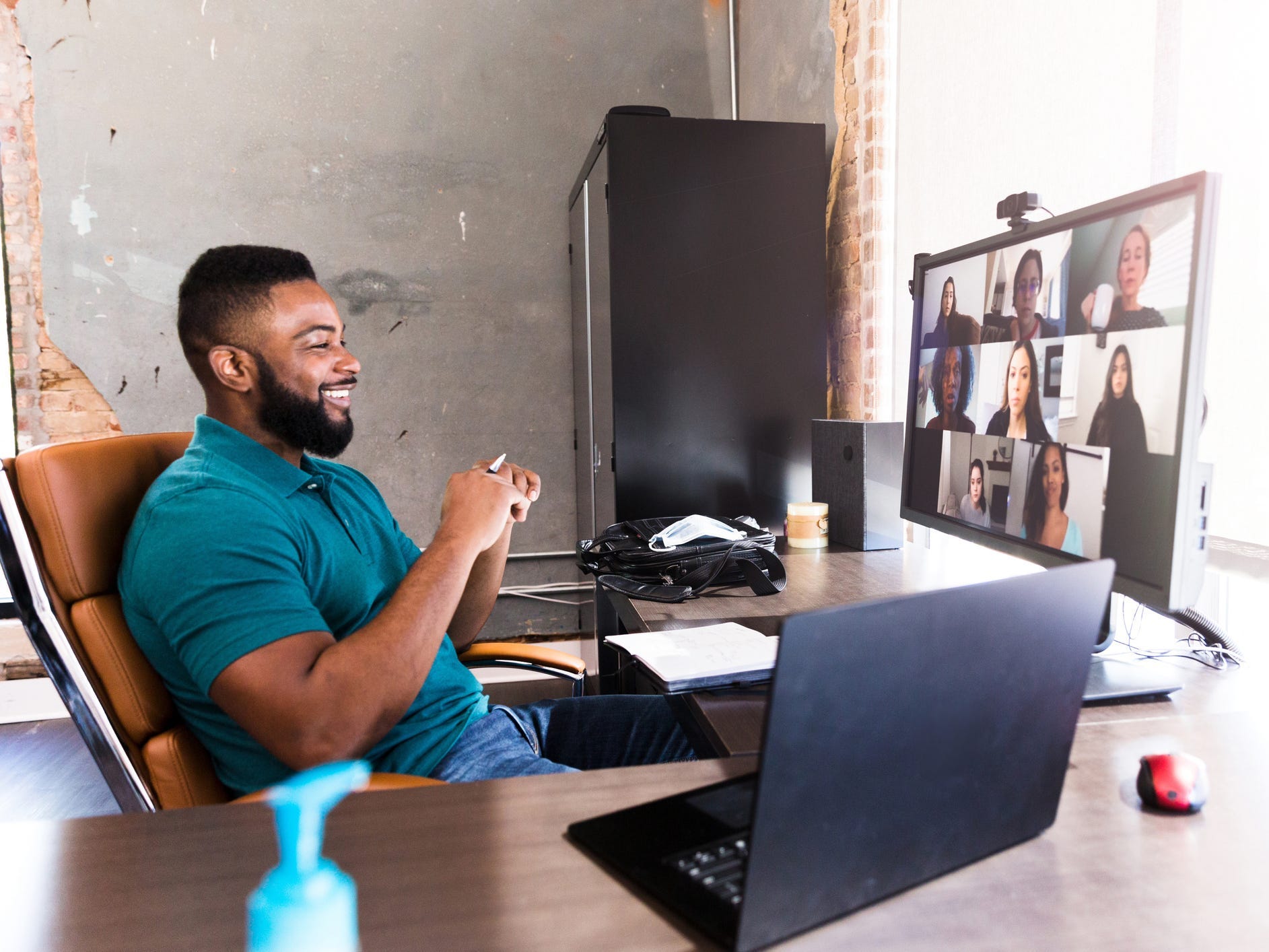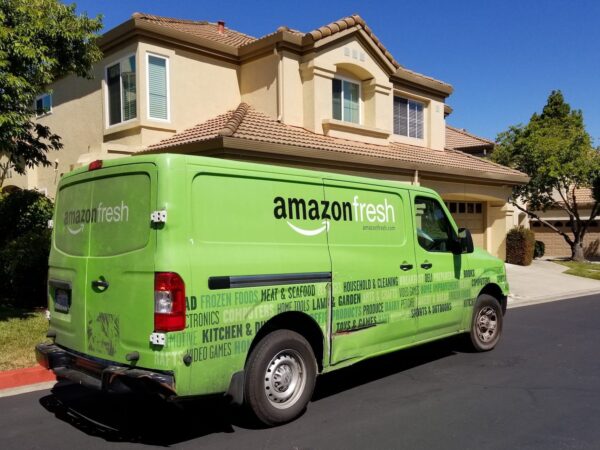
Getty Images
- BCG's "The Bionic Company" envisions a workplace where tech combines with human adaptability.
- It's one model for the future of the post-pandemic company considering going hybrid or fully remote.
- It involves tech being a main focus, bucking traditional leadership, and giving employees autonomy.
- This article is part of a series called "Future of Work," which examines how business leaders are rethinking the workplace.
With the Biden administration setting a goal of 70% of US adults having at least one vaccine shot by July 4, business owners and employers are now anticipating a return to the workplace in some form.
As much as dealing with the pandemic itself was a completely new challenge, envisioning the shape of the workplace in its aftermath has become a discipline all its own.
Brandy Aven, associate professor of organizational theory, strategy, and entrepreneurship at Carnegie Mellon University's Tepper School of Business, told Insider that companies are not going to be able to take a one-size-fits-all approach.

Brandy Aven
"Leadership should consider each worker's situation and circumstances in as nuanced a way as possible rather than try to generate a uniform or blanket policy," she said. "Similarly, the motivation and rationale for bringing workers back to the office should also be carefully considered and discussed with your workforce."
Aven's recommendation for companies includes a "collective dialogue" to generate solutions.
"In general, I would first aim to get individual feelings in a manner that will allow as many people to share their concerns and situations - for example, a survey or one-on-ones," Aven said. An online forum or discussion board are other options.
This is one path forward in what consultant Paula Rizzo, author of two books on organization, labels as "an opportunity to not go back to the way things were."

Paula Rizzo
"None of us are the same. Now people have this new sort of freedom from working remotely, and now everything is changing again," she told Insider. How companies handle this change, Rizzo added, will determine how successful they are at retaining their employees.
"We've got a challenge where when we come back into the world of mixing virtual and physical interaction again, companies really need to think about how they make it the best of both of those experiences," Rich Hutchinson, managing director and senior partner and social impact practice leader at Boston Consulting Group (BCG), said. "I really believe that people thrive on engagement and seeing other people, but the flip side is that there are huge benefits in being more productive in what you're doing, but also spending more time with your family or being more flexible with where you are."

Rich Hutchinson
Hutchinson was one of the authors of a recent BCG report envisioning the future of the workplace entitled "The Bionic Company." In it, the consulting group envisions a workplace where technology combines with the "flexibility, adaptability, and comprehensive experience of humans" to create a "superhuman enterprise."
This breaks down into several actionable steps that all businesses should keep in mind.
Make technology a priority
First, companies must work to integrate the technology they've leveraged during the pandemic into their regular workflow, and evaluate how those processes can be further deployed as workers return to the workplace.
"How will the core processes of the business evolve?" and "How will humans and technology create a more efficient process?" are the key questions leaders should be asking, Hutchinson said.
Hutchinson gave an example of outcomes he's seen these questions produce in action at a leading retailer. The company "built an algorithm to choose fashions for the next season. The algorithm improved on human choices alone," he said. "But the best results were achieved when human recommendations were both inputs to an improved algorithm and also experts audited the outcomes. It's an example of leveraging the power of humans and technology together."
Becoming a "bionic company" isn't just for large enterprises, either.
"The trick for small companies and entrepreneurs is to think about their processes in this bionic or digital mindset from the beginning, or adopt them in order of the ones where they think they'll get the biggest bang for the buck," Hutchinson said. "But because you're small, I actually think you can build in a lot of the agile organizational mindset or the technology mindset pretty easily," he added.
Buck the traditional leadership model and remain transparent
The next consideration is how leadership functions as you come back to work after the pandemic.
In the bionic workplace, it differs from the traditional top-down model, Hutchinson said. In traditional leadership, direction comes from the top and flows down to employees without much input or room for questioning, whereas in bionic leadership, it's team-based, where the teams build products or drive outcomes and are charged with accomplishing their missions on their own.
"Leadership becomes much more about how I structure my teams, what are they working on, what's the mission, do I have the right composition of talent on those teams, can I help remove roadblocks from them along the way, and if the project just isn't working, do I shut it down and redeploy that talent onto other teams that have better uses?" Hutchinson said. "It's basically how do you set up the teams, charge them with the mission, remove the roadblocks, and let them go, rather than managing a team and sort of orchestrating its activities in a very controlled manner."
Keeping workers motivated throughout the changes that encompass a return to the workplace is another critical consideration, Hutchinson said. He said that taking the time to explain how the changes are going to be beneficial not just for the company, not just for the customer, but also for the workers, is key to their success. Having reached an unprecedented level of transparency during the pandemic, there's no going backward.
For example, many companies that are digital natives use agile staffing processes to supplement their core employee base. Hutchinson said that handled properly, employees don't see this as a threat.
"Employees are restaffed to other work that is now higher value. They see that making the company efficient through technology helps it win," he said. "Growth creates opportunities for the employee. And agile staffing makes work more interesting rather than stagnant."
That type of communication is common among companies that originated during the digital age, Hutchinson said.
"One of the things the digital natives have done really well is helping people understand that if we can grow and become more efficient and leverage these techniques into a more bionic operating model, that actually creates more opportunity for all of us, and our sincere goal is to help people find new roles and grow," he said. "So I think there's a large part of it that's down to how the company executes it and helps people see the positives in their journey."
Give employees an opportunity to structure their days
As business owners start pondering how to move forward, employees' views will be central to considerations, Hutchinson said. He predicts that more autonomy in the workplace is almost unavoidable.
Employees "sharing what worked and what didn't - and what they are looking for in a job moving forward - both will shape how employers structure jobs post-pandemic," Hutchinson said. "For some, the pandemic has meant they needed to and could work in a more independent manner. Where this worked, I think employees will push hard for it to stick."
Rizzo also believes that employees should get a head start on showing employers what they want and need by planning out what they'd like their work model to look like.
"We have an advantage because we know it's coming," she said. "We were all blindsided when remote work became full time, now you have some perspective - use it! Make a list of what you're better suited to do at home and what works better in the office as you design your hybrid work model. It's a good time to craft your days in a particular way that will make you more efficient, no matter where you are."
Hutchinson identified less management, or the feeling of less management, as a benefit of the bionic workplace as well.
"They find that they're operating more agile, which can be really energizing because it doesn't feel as managed, it feels much more self-directed and they're much more empowered," he said.












